-
THE DICTATOR
-
THE STUDENT
-
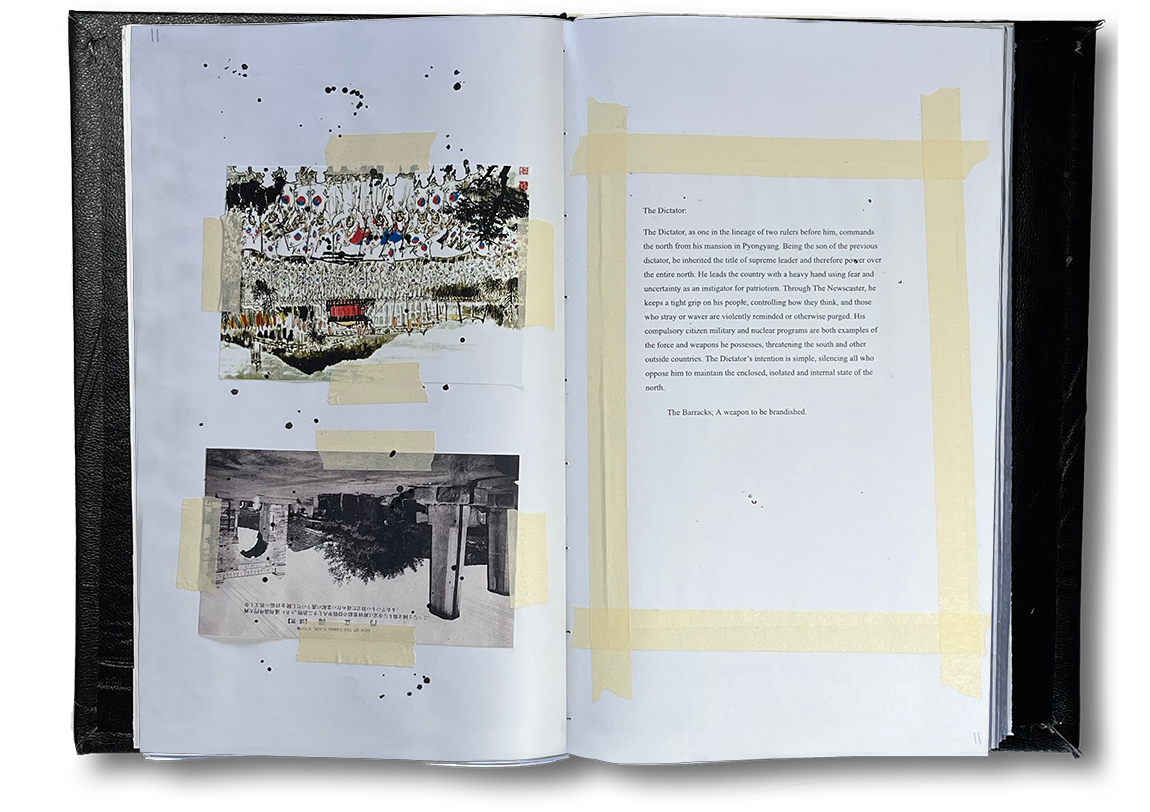
-

-
#11 titled The Arch shows an architectural arch which on one side is constructed with heavy stone and on the other side is constructed with books. The drawing references the building up of these nations, but placing emphasis and foundation in different areas. In some cases it is intense labor and strict discipline while in other cases it is education and free thinking. Both are present throughout the development of the north and the south. Additionally, the drawing points to the Independence Gate, which currently resides in South Korea was constructed as a shared celebration of freedom in the Korean Peninsula from Chinese rule in 1897.
-
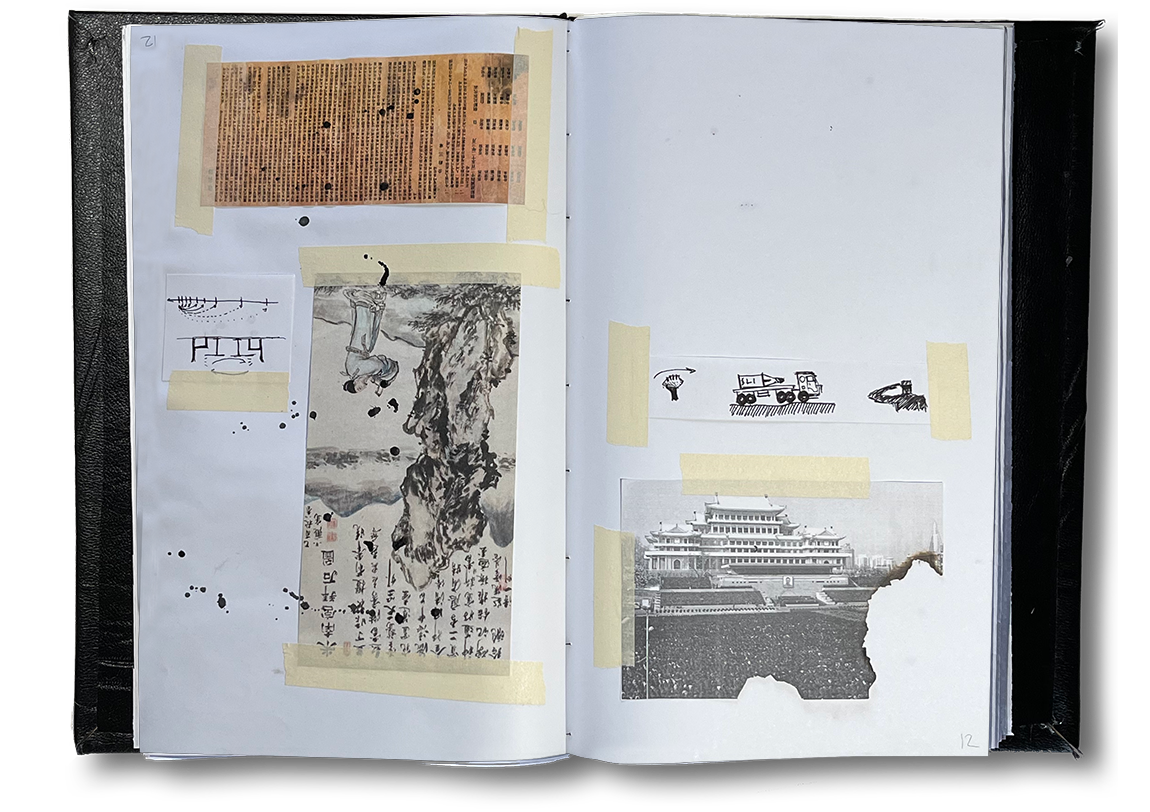
-
#12 titled The Scale shows two rooms suspended from a single point and balanced in an equilibrium. This balance is seen in the use of stone throughout Korean history. The stone was very versatile in Korean culture and served a number purposes other than just as a building material. These two other major uses were as a scholar stone which indicated the presence of an individual who was or is studying a form of education and the stone as a weapon which were often stored in piles near the entrance to residences where individuals could quickly equip themselves in case of attack.
-

-
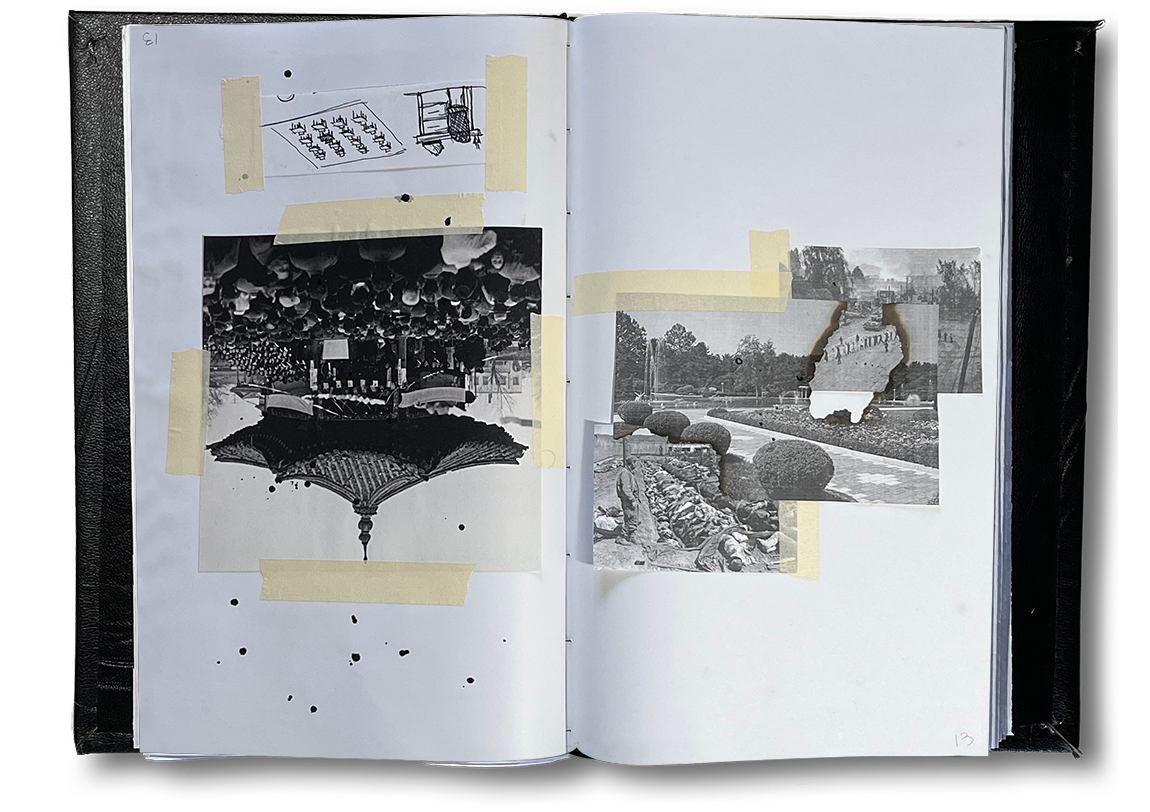
-

-
#13 titled The Courtyard shows three chairs atop platforms which eventually connect lower to ground with vegetation concealing the base of the form. The vegetation illustrated parallels that which is seen on the grounds of Kim Jong Un’s luxurious mansion, sharply contrasting the widespread poverty that many North Koreans continue to live in. Additionally, the three platforms are comparable to the three speeches that took place during the March 1st Movement in 1919. The March 1st Movement was a peaceful, organized event where Koreans called for the independence of their nation from the control of Japan. During this movement, three speeches of their independence declaration were made from three separate locations all at 2 PM. This erupted in massive amounts of violence and Korea did not gain independence until 1945.
-
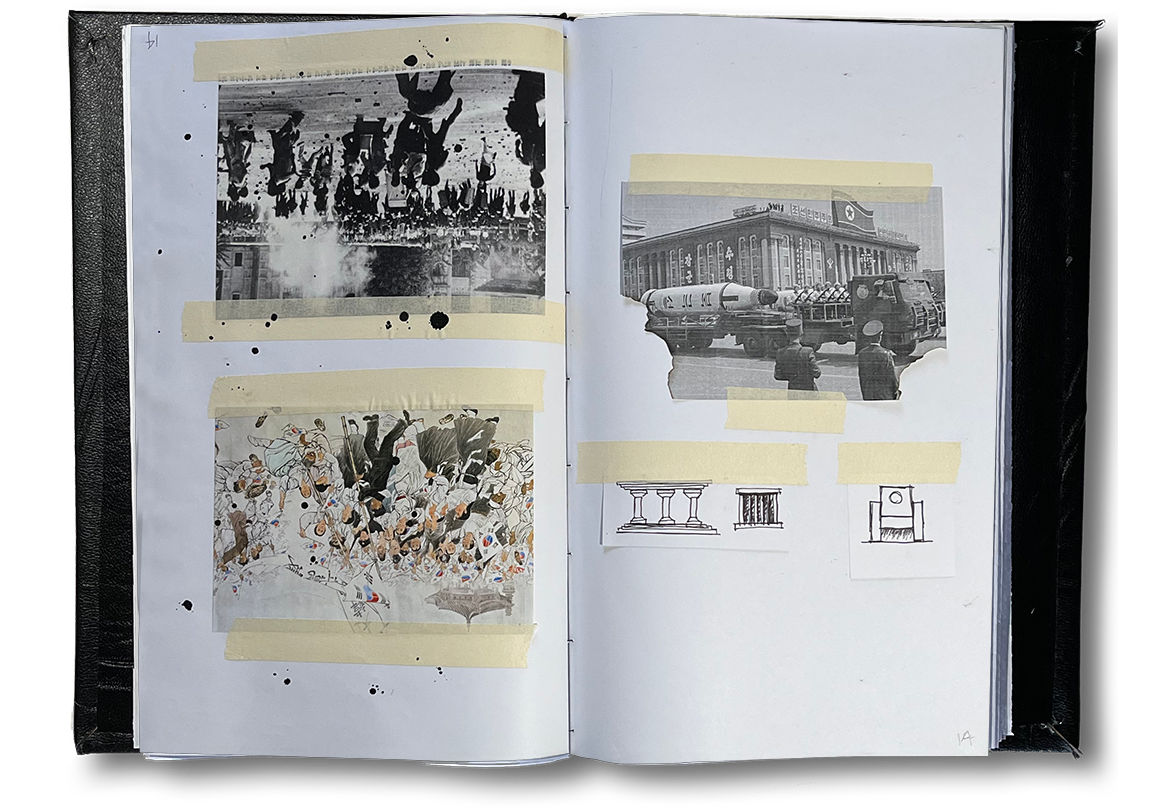
-
#14 titled the Colonnade shows several columns supporting the multiple platforms above. The drawing references the military/governmental architecture that is present within both nations. In the north, military demonstrations are a common occurrence, as a display of strength and training the new soldiers who fulfill their obligatory service requirement. In the south, an authoritarian government used to exist but was greatly contested as the country continued to modernize and democratization protests began to take place around 1980, which often turned violent, demanding for human rights, minimum wage, and freedom of press.
-

-
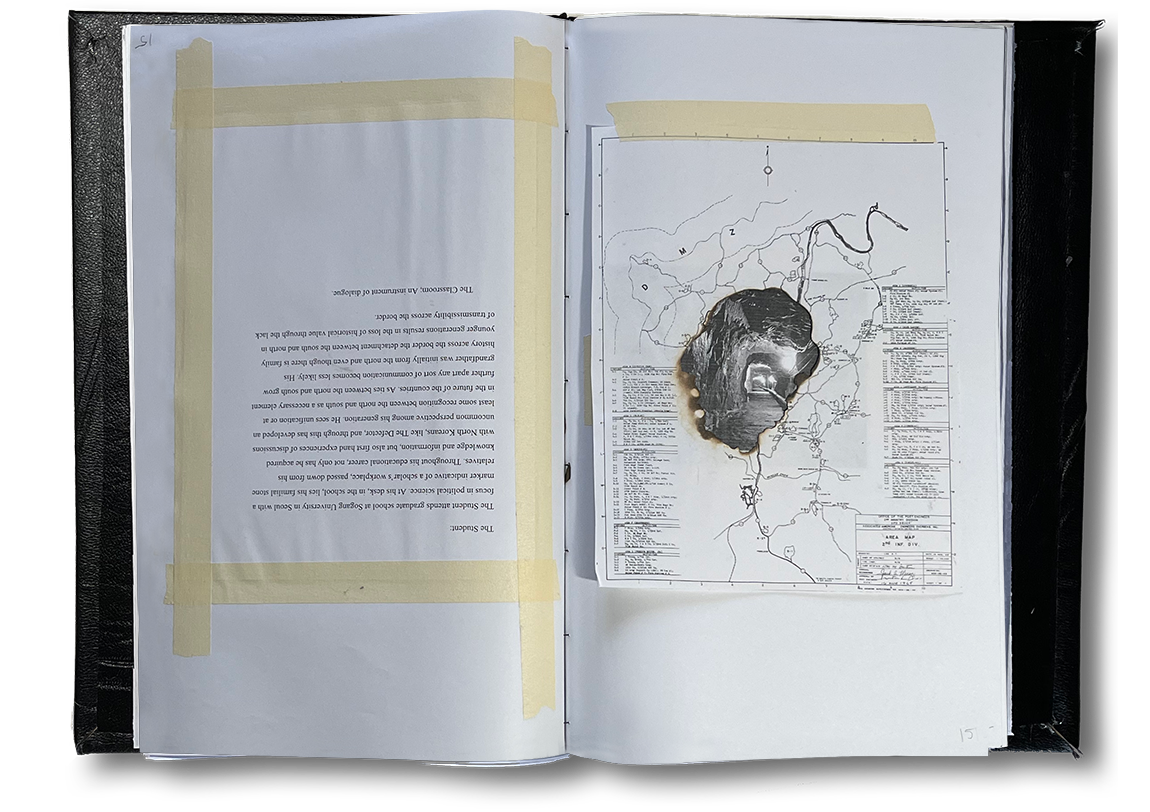
-

-
#15 titled The Tunnels shows multiple routes dug below ground to connect spaces beneath the earth. This drawing references the three tunnels that were discovered by the south around the DMZ as the north was planning a surprise invasion force from underground. The tunnels were discovered by soldiers patrolling the border who reported hearing drilling and seeing steam rising from the ground. Additionally, in another light, these tunnels allude to the restoration of the connection between the two nations, seeing education as a major factor in the remembering of the shared culture that lies in the foundation between north and south.
-
Back